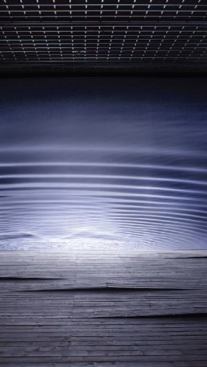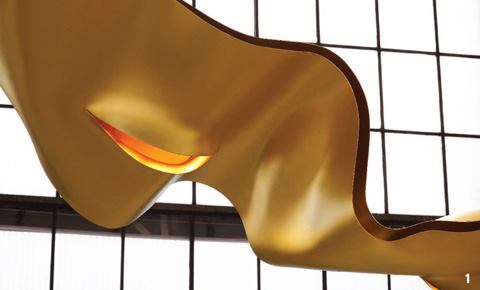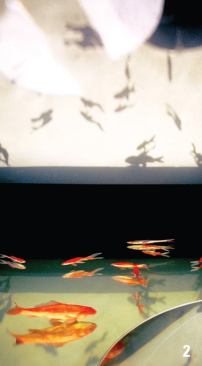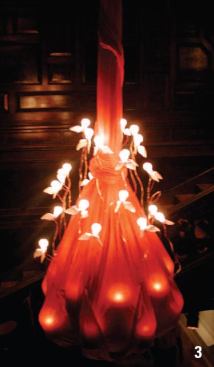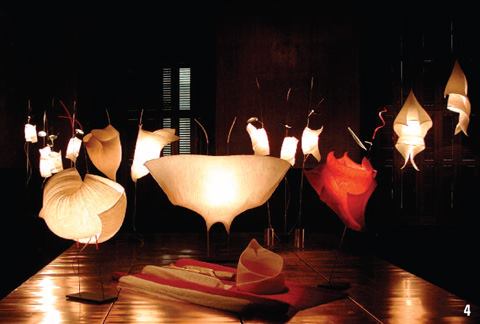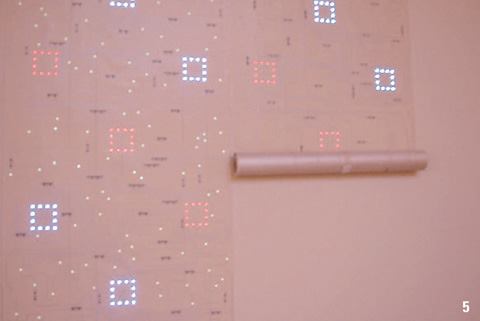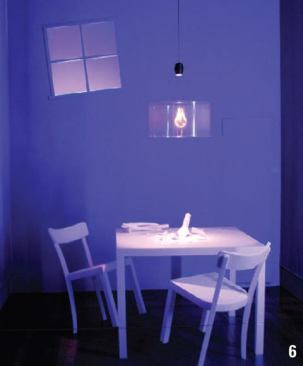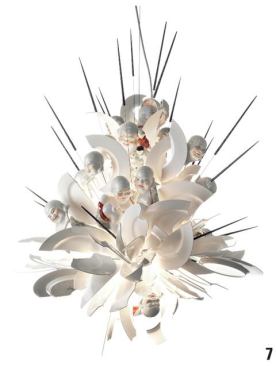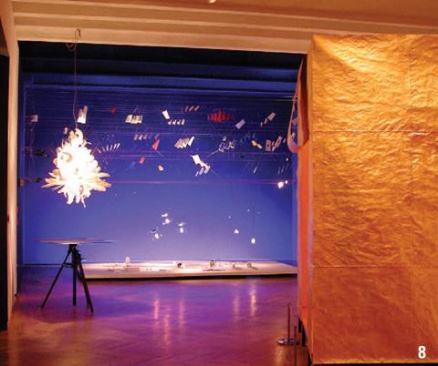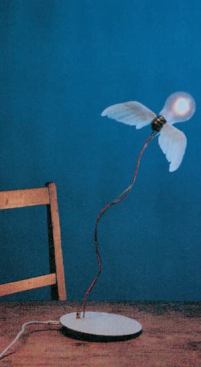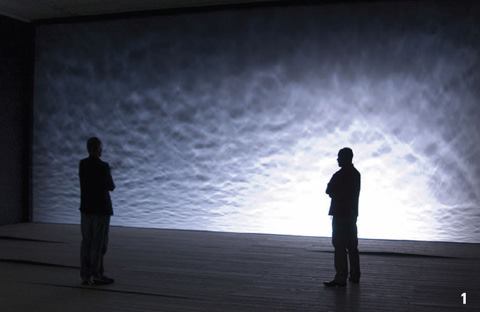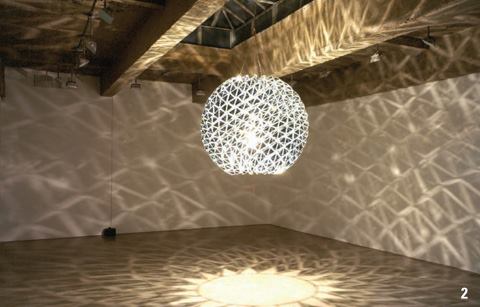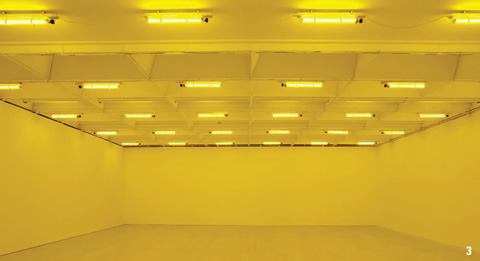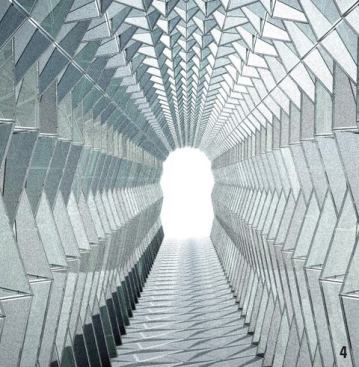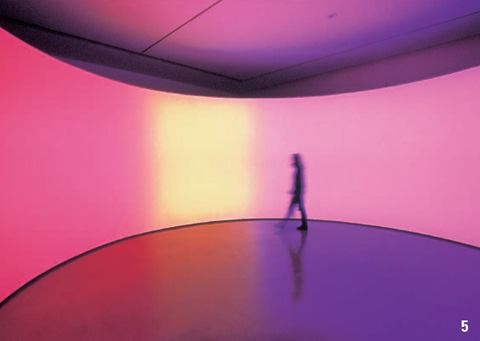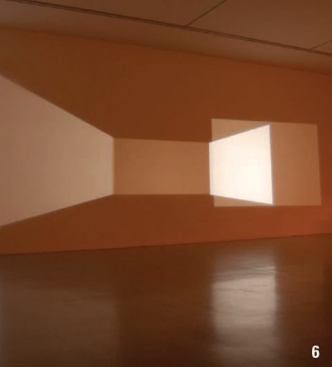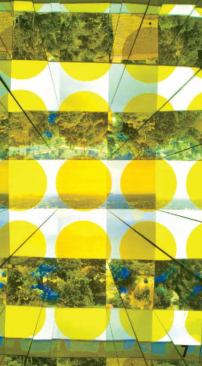Olafur Eliasson'sNotion Motion, 2005AL070901015L3.jpgCLICK TO VI…
Take Your Time: Olafur Eliasson
Icelandic artist Olafur Eliasson is a wizard. he embraces and modifies the environment, with light and time as his primary tools, creating installations that offer the visitor contemplative experiences. Just 40 years old, Eliasson emerges from a complex media age not previously imagined. Therein lies the challenge for a post-object artist: How can one create something powerful enough to engage and move viewers without resorting to entertainment?
Unlike other major artists working with light, such as James Turrell, Eliasson’s work reveals its mechanics. The pieces and environments are organizationally simple, and that is part of his genius. What remains left to the viewer is the experience of the moment, or as Eliasson likes to say, “Seeing yourself seeing.” Eliasson’s emphasis on the viewers’ experience in each constructed environment hopefully inspires visitors to create something. His work successfully creates a forum for self-exploration as well as communal exchange, and this acknowledgement of the vital interconnection between the individual and the commonweal is a profoundly democratic idea underlying his work. The exhibition at San Francisco MOMA, which is essentially chronological in its organization, discusses six major tenants of Eliasson’s work: a distinctive use of mirrors; an exploration of light and optical phenomena; kaleidoscopic elements; landscape referents; scientific methods and materials; and photographic suites of the Icelandic landscape.
In 2003 Eliasson installed The Weather Project, a kind of sun made from light and mirrors, at the Tate Modern in London, which drew record crowds and pushed the artist into the pantheon of contemporary, accessible artists. The San Francisco exhibit also begins with a bath of yellow light as visitor walks into Room for One Colour, 1997. For a brief moment, I imagined that all would be golden as with Weather Project, but then everything pales and people turn shades of gray, the result of the eye’s retina responding to the saturated yellow and compensating for the lack of any other visible color.
One of the exhibit highlights is the 360ºroom for All Colours, 2002, with hundreds of lamps changing color in a panorama that recalls historic dioramas but without pictorial content. In One-way Colour Tunnel, commissioned for SFMOMA’s interior pedestrian bridge, Eliasson borrows from the experience of the kaleidoscope. Seen from the west, the acrylic triangles look black, and on the return trip heading east, each facet explodes with a rainbow of color.
Eliasson uses his considerable power of inquiry and environmental ingenuity to prod each viewer to see and engage again, to take time back from whomever steals it, and to think bravely as a unique person within a larger community. This show is no light entertainment; it’s transformative.
Provoking Magic Lighting of Ingo Maurer
“Light’s Ephemeral and Illusory Nature,” the text reads, and so begins Ingo Maurer’s first solo museum exhibit in the United States currently on display at the Cooper-Hewitt, National Design Museum in New York City through January 27, 2008. With a healthy combination of humor and poetry, Maurer has been exploring light and lighting technologies for the past four decades.
The exhibit installation takes advantage of the Carnegie Mansion’s architecture, although by Maurer’s own admittance the landmark status of the building proved challenging. As you walk up the stairs to the second floor (where the exhibit begins) an existing chandelier is wrapped in red fabric with small winged-light bulbs emerging from the red bundle. Two portraits, in a distinctly Ingo Maurer drawing style, one of Carnegie and the other of his wife, whisper to one another as visitor’s pass by. Carnegie’s wife says, “Look at what they have done to our villa,” to which Carnegie replies, “It was time for a change.”
A combination of installations fitted directly for the Carnegie Mansion coupled with Maurer designs people have come to know provide a complete overview of the artist’s work. One of the more dramatic, as well as new, pieces is called MaNo Nouchies, 2007, paper light fixtures inspired by a traditional Japanese textile-dying technique. The effect of light and pleated paper is magic-like, just as the title of the exhibition states—Provoking Magic.
Particularly helpful in navigating the exhibit is the audio tour, written and narrated by Maurer himself. It offers a firsthand look into the artist’s thinking and the raison d’etre behind many of the displays. A modest man who is not looking for compliments, Mr. Maurer was particularly excited to show this editor one of his latest creations—LED Wallpaper, 2007. Although still a one-off, one can imagine the amazing possibilities this LED technology, in the form of wallpaper, can take.
Maurer is interested in exploring the kinetic relationships that occur when light meets light or object meets object. This is clearly seen in a piece like L’Eclat Joyeaux, 2005, where Maurer explores the moment of “explosion.” Although many of his works have specific meanings to Maurer himself, he is more concerned with the viewer being able to form their own opinion of the work. One of Maurer’s favorite installations in the exhibition, as he describes in a webcast on Cooper-Hewitt’s website, is Wo bist du Edison,…?, 1997, which translates into Where are you Edison? Enamored with the simple elegance of the light bulb, a hologram of a light bulb appears in a pendant-styled fixture that hangs over a table and chairs. Not a new piece, its installation in the Cooper-Hewitt setting is quite striking.
A stimulating visual and thought-provoking journey, Maurer wants to “change the way you think about light.” And that he does, as the visitor is inspired to find the poetry in the everyday lights they find around them.
